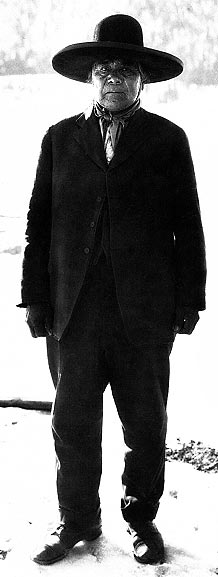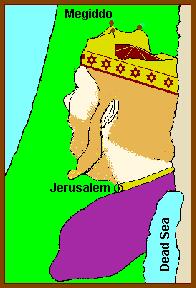Idaho Cherokee Massacre
editor's note: visit Earth Thunder's website at
EARTH THUNDER

Earth Thunder sorely misses the way of life of her childhood in the late
1940s and early '50s, when she lived around the rugged Sawtooth mountains
in a Cherokee band of 40 to 70 people called Kaetahwei.
Her forebears came to Idaho from their ancestral homeland in the southeast
just before the Cherokees were forcibly relocated to Oklahoma along the Trail
of Tears in 1838.
 |
Rob Bartholomew / IPT
Earth Thunder, who teaches Native American traditions to schools around the
region, practices new moon drumming with friends. |
Maintaining culture and finding community have been lifelong struggles for
Earth Thunder, because she was taken to an orphanage in Boise and adopted
by a white family when she was 10. She grew up without many details of her
background or connections to her heritage. She has been unable to locate
any surviving members of the Kaetahwei band, and the Idaho Historical Society
library has no record of the band.
The light-skinned woman with long, dark hair found community in the Oche
(pronounced oh-she) tribe, a group of about 545 people of various tribal
backgrounds from all over the world, mostly in the western U.S., who have
histories like hers and want to practice the traditional, pre-reservation
way of life.
Earth Thunder keeps her culture alive by teaching traditions in bookstores,
Ada County schools, Albertson College of Idaho and Boise State University.
In May she will teach in Australia.
Awareness of Native American ways is increasing, Earth Thunder said, and
it is encouraging when she is invited to local schools.
Gretchen Cotrell, an American Indian mixed-blood (Chippewa-Cree, Chippewa-Sioux
and Cherokee), said it is sad that "Indian people could live their entire
lives in ignorance of their language, their culture, their relatives and
their tribal origins."
Cotrell, a professor of social work at Boise State University, never had
the opportunity to learn her native language, although her grandfather spoke
several American Indian languages. Even though her grandparents and parents
tried to forget their roots, Cotrell recognizes native ways that survived
through her father.
Her father and uncle were punished when they attempted to learn to dance
and use the sweat lodge, a traditional place of worship for American Indians.
Cotrell said her father "grew up in a household that marked the boundary
between two worlds and belonged to neither."
Because of her similar experience being raised "white," as a professor Cotrell
has been interested in issues of race, color and identity, social justice
and poverty.
Cotrell, who grew up in the 1950s on the Flathead (Salish-Kootenai) Indian
Reservation in western Montana, found her connection to the Treasure Valley's
multitribal urban Indian community as a member of and consultant for the
Native American Coalition of Boise. The group is involved in cultural
preservation and teaching children native traditions.
Lindsey Manning, a former Shoshone-Paiute tribal chief at Duck Valley Indian
Reservation on the Idaho-Nevada border, said he is hopeful the language and
religion of his tribe will make a comeback because there are more sweat lodges
on the reservation today than 10 years ago.
The language - which is now rarely spoken, and mostly by elders - has been
preserved in traditions such as the sweat lodge, Manning said.
Manning left 20 years of tribal service in 1997 when he became a Boise State
University student. He still holds residency on the Shoshone-Paiute reservation
and is closely connected to the tribe, which is one of five federally recognized
tribes in Idaho.
Going home two or three times a month helps him maintain his sense of community.
"It's like our own little piece of heaven - left. Our own land," Manning
said of the reservation. "I always look at Duck Valley as a delicate flower
that needs to be preserved as a homeland for our families and our children."
Manning said traditional Indians are a minority on many reservations because
Christian Indians consider their native language and religion heathen. There
are five Christian churches on the Duck Valley Indian Reservation.
When "white" churches, schools and other institutions dealt with American
Indians one of the first things they did was ban their languages and religions,
Cotrell said. Not until the Indian Bill of Rights was passed in April 1968
were Indians granted basic constitutional rights. Up until then, the assimilation
process had gone on since colonial times, Cotrell said.
Growing up away
Earth Thunder's childhood memories of July 4 and Thanksgiving in central
Idaho include the good old boys in town getting drunk and doing some ethnic
cleansing.
For Earth Thunder, the white world was an unsettling change from the simple
hunting and gathering society she lived in until age 10. That's when she
first went to school.
"To sit with a pencil and just start stabbing a piece of paper was bizarre,"
Earth Thunder said.
Because her grandfather spoke five languages, it was difficult for Earth
Thunder when the only language she was allowed to speak was English. She
recalls that her classmates were punished for asking her what Indian words
meant.
Growing up on the isolated Duck Valley Indian Reservation, Manning was in
the majority at school. Indian students frequently raised their hands.
Manning could speak only English in school, but his native language was spoken
at home. Now 44, Manning says things are different. His language is rarely
spoken, and mostly by the older people.
Cotrell's parents raised her as a white person to protect her from racism
on the Flathead reservation.
"Indians were still being shot like game during the '30s," Cotrell said.
"My father remembers sitting in school and listening to young white boys
express their ambitions to 'kill an Injun.'"
"In his own effort to survive he had denied this part of himself," she said,
adding that her father was almost 70 years old when he came to truly accept
himself as an Indian person.
For Cotrell, being raised "white" was a source of confusion.
The phenomenon of "passing" as white was adopted by many mixed-blood Indians
for survival, Cotrell said.
"I was not taunted and attacked by my schoolmates for being Indian. I 'looked
white,'" Cotrell said. "There is a part of you that you pretend doesn't exist,
and some know you're pretending and others don't."
Although there were at least 100,000 Indian people in Montana, American Indians
were rarely mentioned during history lessons in the public school she attended.
Most native schoolchildren held back and were quiet, she said. Because Indian
students were economically disadvantaged, white kids shunned them.
Cotrell was not allowed to date Indian classmates. In her parents' home,
"the subject of our Indian heritage was taboo. My sisters and I were forbidden
from ever speaking of it," she said. "I knew that I was Indian but that,
mysteriously, I should not speak of it."
"Growing up, I thought I was the only person in the world with this problem
and as I educated myself I realized there are thousands of people like me,"
she said.
Since late adolescence, Cotrell has come to see herself more and more as
an Indian person, despite not having had the opportunity growing up to learn
the traditions.
She said her parents were "totally baffled that this was a need that I had.
In their view, they had done a perfect job of protecting me, and it took
them many years to understand my experience."
In a sense American Indian culture is fading because most truly traditional
people are in their 70s and older, Cotrell said. But in another sense, she
said, cultural awareness among American Indians is increasing.
"Because of the resurgence in the '60s of interest and determination to affirm
American Indians and American Indian life, [for] my generation and the people
who've come after me, there's much more freedom to identify oneself as Indian
and embrace Indian ways." Cotrell said.
Today fewer people are "passing as white," she said, because they don't find
it necessary.
WEBMASTERS:
Click here to generate maximum cash for your web site!































